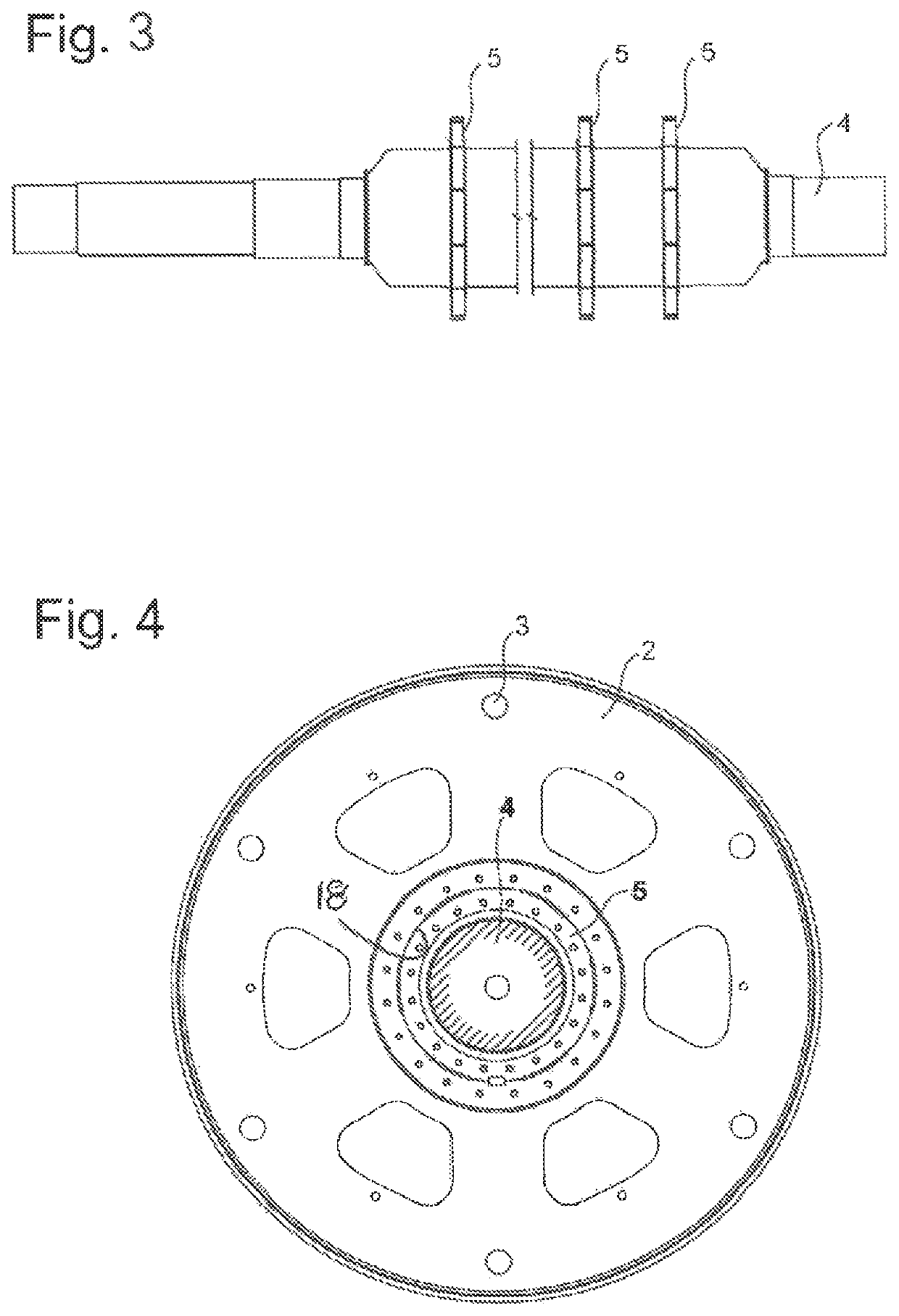Rotor for a disintegration device
a technology of disintegration device and rotor, which is applied in the direction of grain treatment, etc., can solve the problems of only realizing the fit and costly assembly/disassembly of the rotor disk
- Summary
- Abstract
- Description
- Claims
- Application Information
AI Technical Summary
Benefits of technology
Problems solved by technology
Method used
Image
Examples
Embodiment Construction
[0023]FIG. 1 shows a rotor 1 according to the invention for a device for disintegrating feedstock, for instance for an impact hammer mill used in the production of cement. The disintegration tools are not shown. However, it is possible to see axial holes 3, which are arranged in the outer region of the rotor disks 2 and are provided for the axial rods 14 (FIG. 2) on which pivotable disintegration tools 16, in particular hammers, are arranged in the region between the rotor disks 2. When the rotor 1 is rotated, the hammers 16 pivot following the centrifugal force into a position directed radially outward, in which they project beyond the outer disk edge and act in a disintegrating manner on particles of the feedstock. The rotor disks 2 are arranged on a drive shaft 4. Each rotor disk 2, in this case, is arranged on a circular ring-shaped retaining flange 5. The rotor disk 2, in this case, comprises a circular hub bore 18 for the connection to the retaining flange 5.
[0024]FIG. 3 shows...
PUM
 Login to View More
Login to View More Abstract
Description
Claims
Application Information
 Login to View More
Login to View More - R&D
- Intellectual Property
- Life Sciences
- Materials
- Tech Scout
- Unparalleled Data Quality
- Higher Quality Content
- 60% Fewer Hallucinations
Browse by: Latest US Patents, China's latest patents, Technical Efficacy Thesaurus, Application Domain, Technology Topic, Popular Technical Reports.
© 2025 PatSnap. All rights reserved.Legal|Privacy policy|Modern Slavery Act Transparency Statement|Sitemap|About US| Contact US: help@patsnap.com



